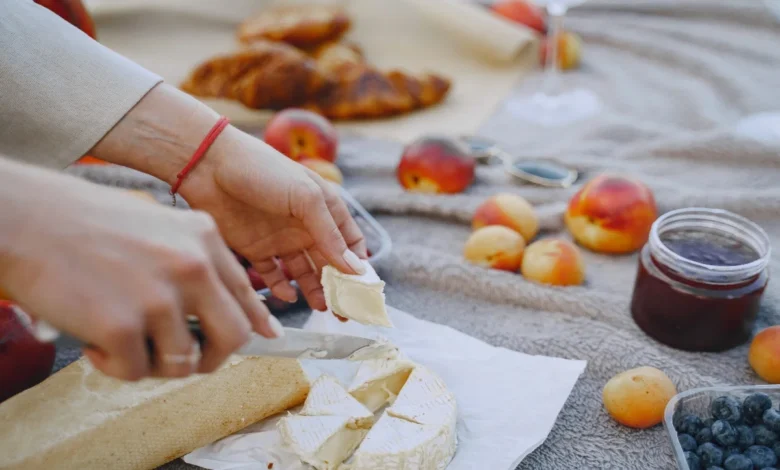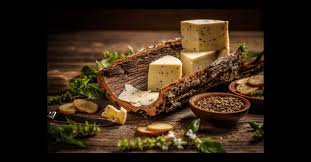Grouse Cheese: A Gourmet Treasure You’ve Probably Never Tasted

Grouse cheese let’s start with the basics: what exactly is grouse cheese? At first glance, the name might sound unusual—after all, “grouse” is more commonly associated with a type of game bird than dairy. But that’s part of the charm. Grouse cheese isn’t a widely commercialized product, and that’s precisely what makes it so special. Often handcrafted in limited batches, this cheese is a small-batch artisanal marvel, typically made in rural or mountainous regions, where traditional methods still dominate.
Interestingly, the term “grouse cheese” doesn’t refer to cheese made from the bird itself (thankfully, we’re not going that wild). Instead, it’s usually a term used to describe cheese that is aged or flavored in a way that complements game meats like grouse. In many cases, it’s made from rich, high-fat milk—either cow, sheep, or goat—depending on the local livestock of the area it’s produced in. The flavor is bold, earthy, and sometimes has that faint smoky note, which pairs incredibly well with roasted or grilled meats.
What sets it apart is not just the flavor profile, but also the aging process and techniques used by the cheesemakers. Some versions are washed in brine, while others may be aged in wine-soaked cloths or rubbed with herbs and ash to intensify the rind. In short, grouse cheese is a luxurious, often overlooked dairy gem with complex flavors you won’t find in your typical grocery store aisle.
Origins and Regional Variations of Grouse Cheese

The origins of grouse cheese are somewhat elusive, adding to its mystique. It’s not one of those cheeses with a neat little backstory that goes back to a single village in France. Instead, it’s a name that has emerged among gourmet circles and artisan markets, often referring to cheeses from mountainous European regions where wild game is part of the culinary tradition.
In parts of Scotland and northern England, local cheesemakers produce bold, tangy cheeses aged in cellars that hold onto the cool, musty air that encourages deep maturation. These cheeses, while not always officially labeled as “grouse cheese,” are crafted specifically to accompany game birds like grouse, pheasant, and partridge. Think of them as flavor companions rather than ingredients—although some gourmet chefs do melt a bit of grouse cheese into sauces for game meat.
In Central Europe, particularly in Austria and Switzerland, similar cheeses are made with goat or mixed milk and aged with regional herbs. These have a more alpine flavor—grassy, floral, and pungent—and are also referred to as “hunter’s cheese” in some circles. The idea is the same: a strong, earthy cheese to pair with hearty meats and forest-foraged dishes.
So, while there isn’t one definitive version of grouse cheese, its identity is rooted in being bold, natural, and deeply connected to traditional game cuisine. It’s not about mass appeal—it’s about heritage, flavor, and culinary pairing.
Flavor Profile: Bold, Earthy, and Unapologetically Rustic
The most exciting part of grouse cheese is its taste. This is not your average creamy cheddar or mild mozzarella. Grouse cheese is made to make a statement—one bite, and your palate will be hit with layers of complexity. Depending on the exact make and region, you might get hints of roasted nuts, mushrooms, aged hay, or even a subtle gaminess. Some versions are sharp with a bite; others are mellow and deeply savory.
A good grouse cheese often has a dense, semi-hard texture that softens slightly at room temperature. It typically comes with a natural rind, which can be rugged and flavorful in its own right. The interior paste is often ivory to pale yellow, with small eyes or air pockets. When sliced, it may release a faint aroma of cellar mold, wild herbs, or even smoke.
The flavor really opens up when paired with food or drink. If you’re eating it solo, enjoy it with a dark rye cracker or a chunk of rustic bread. Want to pair it with drinks? A smoky Scotch or full-bodied red wine like Syrah or Cabernet Sauvignon works beautifully. For food pairings, it’s excellent with roasted grouse (of course), venison, or even mushroom risotto. The complexity of the cheese adds depth and richness to anything it’s paired with.
How to Serve and Use Grouse Cheese in Your Kitchen
Now, let’s talk about how you can incorporate grouse cheese into your cooking or cheese board. While it’s not the kind of cheese you’ll throw on a grilled cheese sandwich (though no one’s stopping you), it can be a true centerpiece for elevated meals and charcuterie spreads.
One of the best ways to enjoy it is simply sliced and served with game meats. If you’re hosting a dinner party and want to offer something unique, create a rustic platter with grouse cheese, cured meats, pickled onions, and wild fruit preserves. The contrast of sharp cheese, tangy pickles, and sweet fruit is unforgettable.
In terms of cooking, grouse cheese works wonderfully grated over baked dishes or stirred into sauces. Try melting it into a creamy pan sauce for roasted duck or lamb chops. You can even use it in a rich mac and cheese dish if you want to give comfort food a gourmet twist.
For baking, some varieties of grouse cheese can be grated into savory scones, biscuits, or even tart crusts. The deep flavor infuses the dough, turning basic baked goods into gourmet bites. Just remember—it’s a strong cheese, so a little goes a long way.
Where to Find Grouse Cheese and What to Look For
Because grouse cheese isn’t a mass-produced item, finding it takes a bit of effort—but the reward is well worth it. Start by checking out local cheese shops or gourmet grocers. Look for artisan brands that focus on traditional aging methods and source their milk from local farms.
Farmers markets are another great place to discover lesser-known cheeses. Talk to the vendors—many small-scale producers don’t even label their cheese as “grouse cheese” but will know exactly what you mean when you describe what you’re looking for. Words like “robust,” “earthy,” “alpine,” or “hunter’s cheese” can often lead you in the right direction.
You can also find some excellent options online from specialty retailers. Look for cheeses aged with herbs, in cellars, or using old-world techniques. Check for reviews and tasting notes—look for descriptions like “musty rind,” “nutty finish,” or “herbal undertones.” These are signs you’re on the right track.
Also, be prepared to pay a premium. Grouse cheese isn’t cheap, but it’s not meant to be. This is cheese as a culinary experience, not just a snack. Think of it as the difference between a fast-food burger and a dry-aged steak.
Why Grouse Cheese Deserves a Spot in Your Culinary Rotation
So, is grouse cheese worth the hype? Absolutely. It may not be as Instagrammable as a gooey brie or as familiar as cheddar, but it brings something entirely different to the table: character. This is a cheese with roots, personality, and a flavor profile that tells a story of hillsides, aging caves, and heritage recipes.
If you’re someone who enjoys pushing your palate and discovering new flavor worlds, grouse cheese is a must-try. It challenges your expectations of what cheese should taste like and makes you appreciate the craft behind artisan cheesemaking. It’s a slow food, a conversation starter, and—most importantly—a delight to eat.
In a world full of processed cheese slices and dairy monotony, grouse cheese is a rare reminder of what real, soulful food tastes like. Give it a try, and you might just find yourself hooked.
Conclusion
Grouse cheese is more than just a name—it’s an experience. Rooted in tradition, packed with flavor, and crafted for gourmet pairings, this underrated gem is perfect for food lovers who appreciate the art of real cheese. Whether you’re pairing it with game meat, crafting a rich sauce, or just savoring a slice on its own, grouse cheese is sure to surprise and impress. So, the next time you’re looking to impress your guests—or just treat yourself—consider reaching for this earthy, bold delicacy. It’s cheese, elevated.



